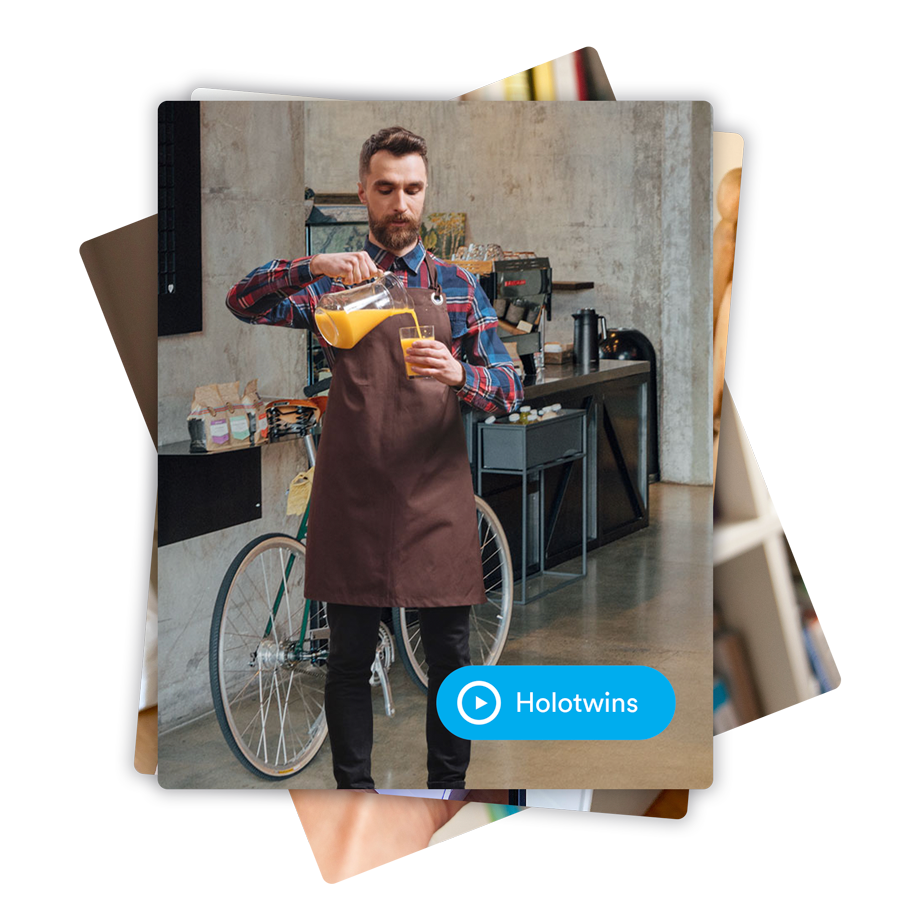AR Asset Management
At It’s Finest
RealityBLU is here for your creative agency or brand as you jump into
Augmented Reality. Our platform allows you to create and manage
brand experiences in AR with no code.


A Breakout Way To
Engage Customers
Today’s marketers are challenged by a media saturated landscape. Use 3D interactive, media rich content to deliver your ideas into this crowded marketplace.




AR Advertising
The world of advertising is constantly changing. Years ago, it may have simply been enough to send out a mailer or advertise your products or services on a billboard. But, today, many businesses are finding themselves trying to find new and engaging ways to grab the attention of their target audience to not lose them to their competitors. One of these new strategies that many businesses are turning to is the use of augmented reality in marketing and advertising efforts. But what exactly is augmented reality in digital marketing? Before diving into what augmented reality can bring to the table in terms of digital marketing strategies and tools, it is important to know what augmented reality (AR) is.Basically, augmented reality is a technology that allows people to interact with people, things, and places without physically interacting with them. For example, businesses who sell items like furniture can use augmented reality to allow customers to see what a couch, dresser, or any other piece of furniture would look like in their home so that they can be sure that they like the product before purchasing it. This “virtual try-on” type of service allows customers to feel more confident about their purchase as well as more connected to the pieces that they are looking at. In the long run, this means fewer returns and more satisfied customers. If you are curious about the benefits of augmented reality in marketing, you may be able to find an “augmented reality in marketing” research paper that offers statistics that show just how AR tools can help marketing efforts.
So, now that you know what AR is, what is augmented reality in marketing? There are numerous examples of augmented reality in marketing today since more and more businesses have been adopting tools that allow them to utilize AR for their marketing efforts. One of the many benefits of augmented reality in marketing is that it can help your company to create more interactive and engaging content for your customers. Essentially, rather than simply relying on traditional content — such as product images and descriptions or blog posts — to advertise your products and services, you can use augmented reality tools to create more interactive product views that are better able to catch the attention of your target audience. Creating an augmented reality marketing strategy can seem intimidating at first, but once you begin to think about AR tools as simply the next step in technology, it can be much easier to bring them in. Using augmented reality in sales and marketing efforts can be a great way to improve your customer experience and create more memorable and valuable interactions with your customers. This can make your business stand out from your competition and encourage customers to prefer your product over the competition because you offer a better experience.
AR Advertising Examples
There are many different examples of AR advertising today. From virtual advertising examples from perfume advertisements to larger AR views that allow customers to virtually place furniture items into their real-world homes before purchasing, there are numerous applications of AR in advertising. If you are interested in learning more about what you can do with AR to set your company apart from your competitors, you may find it helpful to look for an augmented reality definition and examples online.Looking online for augmented reality examples in business can be an incredibly effective way to determine the ways that you may be able to use AR advertisements for your own business. While virtual and augmented reality technologies are still relatively new to the market, there are tons of different augmented reality marketing companies and platforms, like RealityBlu, that provide tools that you can use to create your own AR product views and scenes. If you are unsure of where to begin with AR in your business, it can be helpful to look for 10 examples of augmented reality used in businesses that are in the same industry as yours or are otherwise similar to your business. For example, if you are close to the educational field, you may want to look for augmented reality examples in education. No matter what industry you are in, there is likely to be a variety of AR examples to look at because more and more people are showing interest in these types of more interactive and engaging customer experiences.
Ar Advertising Companies
When it comes to finding the right augmented reality companies to work with to create the AR scenes that you are looking to create, it can be challenging. This challenge comes not because there are not enough augmented reality services and companies available to choose from but because there are so many different options available. There are publicly traded augmented reality companies, private companies, platforms, tools, and software solutions that can all provide you with the tools that you need to create the engaging content that you want. The trick is knowing which of these companies are the best augmented reality companies and which ones will be the most beneficial for your business.A good place to start your search can be finding or compiling a list of top AR company names. You can then use this list to determine which tools and features are included in the top AR companies. This will help to ensure that you are finding a good solution that will provide you with the tools and features that you need to make the AR content that you want to make. It can also be good to look at augmented reality companies’ stock because this can sometimes be a good indication of how well-respected a company is. If you are looking for a tool that allows you to create high-quality AR content without needing coding or other technical knowledge, then RealityBlu may be a great option for you. RealityBlu can help you create easy marker-based or markerless AR scenes without needing any coding knowledge. The simple drag-and-drop platform can help you to realize your AR advertisement ideas without needing to hire programmers or developers. This makes it a great tool for any business that wants to improve their content and their customer interactions without complex processes.
Augmented Reality Billboard
There are many different approaches to augmented reality marketing today. Some businesses prefer to simply create and utilize AR experiences through an app so that their customers are able to have more interactive experiences with the brand in-app. Other businesses may find that creating augmented reality ads that are geared toward their target audience are a great way to bring in new customers. For example, one business may find that it is able to bring in a lot of new customers by creating a 3D billboard or poster advertisement with a QR code that people can easily access to learn more about the products or services that the business provides.
No matter what you decide to use AR for in your business, it can be helpful to get inspiration and ideas from other augmented reality advertising examples. These examples can come from your competitors or businesses in completely different industries. The reason why these examples can be so helpful is that they can help you to see new and innovative ways that you can use AR to appeal to your customers.
Facebook Augmented Reality
Examples of augmented reality can be found all over the internet today. One place that can be a great way to find augmented reality ads examples is Facebook. This platform has a number of AR ads and marketing campaigns on it that businesses can use to reach their target audience through social media pages. Looking for a Facebook AR ads case study from another company can be a good way to get ideas for your own business on how to use AR on social media. It can also be helpful to look at Facebook AR ads examples or Facebook AR ads specs in order to see how other companies are formating these ads and how they are driving engagement from their audiences.
To find examples, you can do a web search for “facebook augmented reality metaverse” or simply scroll through your own business’s Facebook feed or look at some of your competitor’s feeds to see what types of AR advertisements they may have on there. You can also look for Instagram AR ads if you are hoping to include your advertisements on other platforms that are not Facebook.
Augmented Reality Products
If you are ready to start using augmented reality in your business, you are likely looking for the right augmented reality apps or software solutions for your business. There are a lot of options available when it comes to augmented reality technology, and because of this, finding the best options for your business can seem like a daunting task. However, if you know what types of augmented reality ideas you are looking to create, you can find augmented reality advertising examples that do what you are looking to do and see what tools they used to achieve those examples. You can find augmented reality examples by doing an online search for something like 10 examples of augmented reality. This will help you to see a variety of uses of AR in marketing and give you ideas about how you may want to use AR in your own business.
Another way to decide what augmented reality companies or tools to consider is by determining how you want to use augmented reality in business. For example, if you are a retail business that is looking to create more interactive product descriptions for your online store, you will want to look for AR tools that allow you to do this, such as RealityBlu. Using RealityBlu’s platform, you can create more engaging 3D objects rather than simple 2D images that your customers can engage with and make more informed and confident decisions about purchasing. This can also make customers more likely to return when they are in need of another product that you sell.



